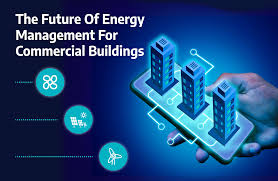As energy costs rise and sustainability becomes a priority, commercial buildings are under increasing pressure to optimize energy usage. The future of energy management isn’t just about saving money—it’s about building resilience, enhancing performance, and contributing to a sustainable planet. Fortunately, a new wave of strategies and tools is empowering facility managers, developers, and business owners to take control.
? 1. Smart Energy Monitoring & Analytics
The backbone of modern energy management is real-time monitoring. Smart meters and sensors now provide precise data on energy usage at the device, system, and building level. Platforms powered by AI and machine learning analyze this data to:
Identify inefficiencies
Predict energy spikes
Recommend improvements
Benchmark performance across multiple buildings
Trend to watch: AI-powered energy platforms are becoming standard for multi-site commercial portfolios.
? 2. Energy-Efficient Lighting & HVAC Systems
Lighting and HVAC systems are typically responsible for over 50% of a commercial building’s energy use. By upgrading to LED lighting, occupancy-based controls, and smart thermostats, businesses can slash energy consumption dramatically.
LED retrofits deliver 30-70% energy savings
Smart HVAC adjusts based on usage patterns and weather data
Zoning systems allow more granular control in large facilities
? 3. Integration of Renewable Energy Sources
As the cost of solar, wind, and battery storage continues to drop, integrating on-site renewable energy is more viable than ever. These systems reduce grid dependence and protect against volatile energy prices.
Rooftop solar panels are increasingly common on office buildings and warehouses
Battery storage allows buildings to store excess energy for later use or emergency backup
Net metering lets buildings sell excess energy back to the grid
♻️ 4. Demand Response & Load Shifting
With demand response programs, buildings can reduce energy use during peak hours to avoid high rates and grid strain. Load shifting uses automation to:
Run high-energy tasks during off-peak times
Reduce operational costs
Lower carbon emissions when grid energy is dirtiest
? 5. Building Automation & IoT Integration
Modern energy management is all about automation. Integrating energy systems with Building Automation Systems (BAS) and IoT sensors enables:
Real-time alerts for abnormal consumption
Automatic adjustments to equipment schedules
Centralized control across all systems
Example: A BAS might reduce HVAC output when occupancy sensors detect an empty floor.
? 6. Setting & Meeting Sustainability Goals
Green certifications like LEED, WELL, and Energy Star aren’t just badges of honor—they improve marketability and attract eco-conscious tenants and investors.
Tools like energy dashboards help:
Track progress toward carbon neutrality
Generate compliance reports
Support ESG (Environmental, Social, Governance) strategies
? Looking Ahead: A Smart, Sustainable Energy Future
Energy management is no longer a backend task—it’s a strategic asset. As buildings become more intelligent, automated, and sustainable, businesses will see the return not only in lower bills but in higher building performance, resilience, and brand value.
In the future, energy won’t just be consumed—it’ll be optimized, traded, stored, and even generated on-site.
The Future of Energy: Strategies for Effective Energy Management in Commercial Buildings

